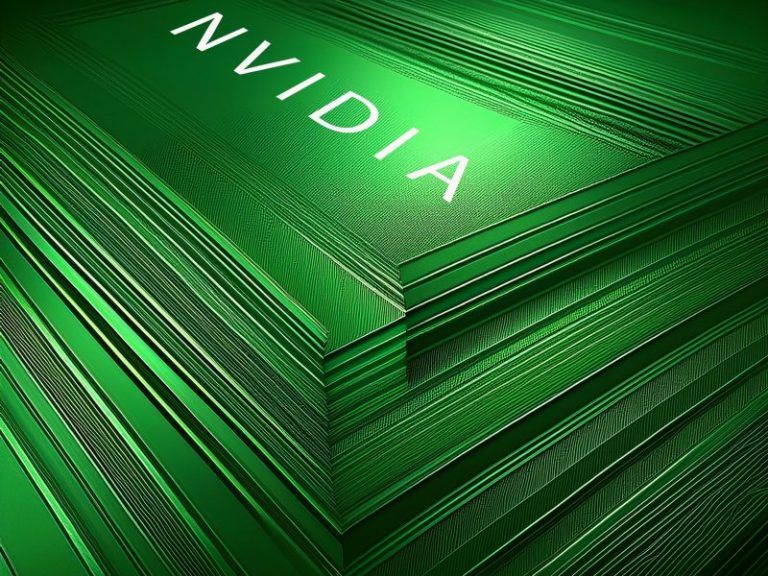Fundamental Analysis/4 : Market Cap: Company Size, Potential, and Risk for Investors
Table of contents
Introduction: The First Look at a Company’s Size
In our fundamental analysis journey, we have already delved into crucial indicators such as the P/E Ratio, the PEG Ratio, and the Price/Book Ratio, which have allowed us to evaluate companies based on their earnings, growth, and book value. However, even before diving into complex financial ratios, there’s a data point that immediately catches the eye and provides a first, immediate indication of a company’s size and “scale”: its Market Capitalization
Market Capitalization, often abbreviated as Market Cap, is not a ratio like the previous indicators, but an absolute value that represents the total value of all outstanding shares of a company. It is a fundamental data point that every investor should consider, as it offers a quick overview of the overall size of a publicly traded company. Furthermore, is often a key factor influencing the perception of risk, growth potential, and liquidity of a stock.
In this article, we will shed light on Market Cap (Market Capitalization). We will explain exactly what it is, how it is calculated, and, most importantly, why it is so important for an investor. We will delve into the different categories and understand how a company’s size can influence your investment decisions. Get ready to take a conscious “first look” at every company.
What is Market Capitalization ?
The Market Capitalization of a company is a fundamental data point that reflects its total market value. In other words, it is the price the market would be willing to pay to acquire the entire company, assuming all its shares were for sale. It is not an “accounting” value like that of the Price/Book Ratio, but rather a dynamic value that changes daily based on the market price of the shares.
Market Cap is not an indicator of the amount of cash a company has on hand, nor of its intrinsic value based solely on assets. Rather, it is a measure of its size as perceived by the market, incorporating investors’ expectations about its future growth, profitability, and stability.
For this reason, Market Capitalization is often the first parameter that investors and analysts consult to get an immediate idea of a company’s “magnitude” and to understand what risk/opportunity category it might belong to.
How is Market Capitalization Calculated?
The calculation of Market Capitalization is surprisingly simple, as it requires only two easily obtainable data points: the current stock price and the total number of outstanding shares.
The formula is as follows:
\( \text{Market Capitalization} = \text{Current Stock Price} \times \text{Total Number of Outstanding Shares} \)Let’s briefly analyze the components:
- Current Stock Price: This is the price at which a single share of the company is traded on the market at a given moment. It is the “live” price you see in stock quotes.
- Total Number of Outstanding Shares: This refers to the total number of shares of a company that have been issued and are currently held by investors (public and private), excluding treasury stock that the company itself has repurchased. This data is usually available in company financial statements or on specialized financial websites.
Market Capitalization: An Example with Alpha Tech and Beta Innova
To better understand the calculation, let’s revisit our familiar companies, Alpha Tech and Beta Innova:
| Characteristic | Alpha Tech | Beta Innova |
|---|---|---|
| Current Stock Price | $50 | $30 |
| Number of Outstanding Shares | 100,000,000 shares | 500,000,000 shares |
| Calculation of Market Capitalization | $50 x 100,000,000 | $30 x 500,000,000 |
| Market Capitalization | $5,000,000,000 (5 billion) | $15,000,000,000 (15 billion) |
What does this tell us? This example clearly shows that, despite Alpha Tech having a higher share price, Beta Innova is a much larger company in terms of overall market value. Beta Innova has a Market Capitalization three times higher than Alpha Tech’s, placing it in a very different size category.
Why is Market Cap Important?
Market Capitalization is not just a number indicating a company’s size; it is a crucial indicator that deeply influences the perception of risk, growth potential, and the stock’s behavior in the market. Understanding Market Cap will help you better contextualize your investments.
Here are the main reasons why is fundamental:
- Risk Indicator: Companies with a high Market Cap (Large Cap) are generally considered less risky than smaller companies. This is because they tend to be more mature, more stable, with consistent cash flows, and greater access to capital. They are often “blue chips” with a solid market position. Companies with a reduced Market Capitalization (Small Cap), on the other hand, can be more volatile and present greater risk. They may be less established, with fewer resources to face economic crises or competition.
- Growth Potential: Small Caps, precisely because of their smaller size, often have greater percentage growth potential. Starting from a smaller base, even a modest increase in absolute terms can translate into a high percentage growth in share price. Large Caps, conversely, tend to grow more slowly in percentage terms, even if they generate enormous profits in absolute terms. It is more difficult for them to “double” their value.
- Liquidity: Shares of companies with a high Market Cap are generally more liquid. This means it is easier to buy and sell them without significantly influencing the price. There is a higher trading volume. Small Cap shares can be less liquid, making it more difficult to buy or sell large blocks of shares without causing price fluctuations.
- Influence on Market Indices: Large Caps have a greater weight in market indices (such as the S&P 500 or FTSE MIB). Their performance more significantly influences the overall market trend. Investors who follow indices are therefore more exposed to large caps.
Categories: Small, Mid, and Large Cap
Market Cap is often used to classify companies into different size categories. Although there are no universal definitions, and values may vary slightly depending on the source or historical period, here are the most common categories in the United States (and used as a global reference):
- Large Cap (High Capitalization): Generally, companies with a Market Cap over $10 billion. These are industry giants, often market leaders, with global operations and recognized brands. They are considered more stable and less volatile investments, suitable for those seeking security and consistent growth, perhaps with dividends. Examples include Apple, Microsoft, Amazon.
- Mid Cap (Medium Capitalization): Generally, companies between $2 billion and $10 billion. These are companies in an intermediate growth phase, often already established but with plenty of room for expansion. They offer an interesting balance between growth potential (higher than Large Caps) and stability (higher than Small Caps).
- Small Cap (Small Capitalization): Generally, companies below $2 billion. These are often young, innovative, or niche companies, with high growth potential, but also high risk and greater volatility. They can offer exceptional returns but require more in-depth research and a high tolerance for risk.
Limitations : When Size Doesn’t Say It All
Although Market Capitalization is a fundamental indicator for understanding a company’s size and general perception, it is not a perfect tool and has important limitations. Relying solely on Market Cap can lead to incomplete or incorrect conclusions. It is crucial to be aware of what this number does not tell you.
Here are the main limitations :
- Does Not Reflect Complete Financial Health: Market Cap tells you how much a company is worth on the stock market, but it tells you nothing about its debts or liquidity. Two companies with the same market capitalization might have very different balance sheets: one could be solid with little debt, the other could be heavily indebted and at risk. For this reason, it is essential to also analyze net debt and cash flow.
- Ignores the Value of Specific Assets: Market Capitalization is an aggregate value. It does not distinguish the quality or specific value of underlying assets (e.g., real estate, plants, patents). A company might have a high market capitalization, but its main assets could be obsolete or overvalued.
- Influenced by Stock Price Volatility: Being calculated directly from the market price, Market Cap is extremely volatile. It constantly changes with fluctuations in the stock price, which can be influenced by short-term news, market sentiment, or speculation, not necessarily reflecting a change in the company’s fundamental value.
- Does Not Consider Real Future Prospects: While Market Capitalization incorporates market expectations, it does not provide an objective assessment of real future growth or profit prospects. These require a more in-depth analysis of earnings, growth (as seen with P/E and PEG), and the company’s strategic plans.
- Not Suitable for Unprofitable Companies or Start-ups: For young, rapidly growing but not yet profitable companies, or for start-ups that do not generate profits, Market Cap can be very high even in the absence of significant earnings or tangible assets. In these cases, Market Cap almost entirely reflects expectations of future growth and can be difficult to justify with traditional indicators.
Conclusion: Market Cap as a Starting Point for Your Analysis
Ultimately, Market Capitalization is an essential starting point for any fundamental analysis. It offers you an immediate and clear view of a company’s size, helping you categorize it into Small, Mid, or Large Cap and understand the general implications in terms of risk, growth potential, and liquidity.
We have seen that it is simply calculated by multiplying the current stock price by the total number of outstanding shares. This number, although intuitive, incorporates market expectations about the company’s future. However, it is crucial never to consider it in isolation. This will tell you nothing about detailed financial health, asset quality, or a company’s intrinsic value.
To make truly informed investment decisions, you must always integrate Market Cap with other fundamental analysis indicators we have already explored, such as the P/E Ratio, the PEG Ratio, and the Price/Book Ratio. Only by combining these different perspectives can you build a complete and robust picture of a company’s value and potential.






